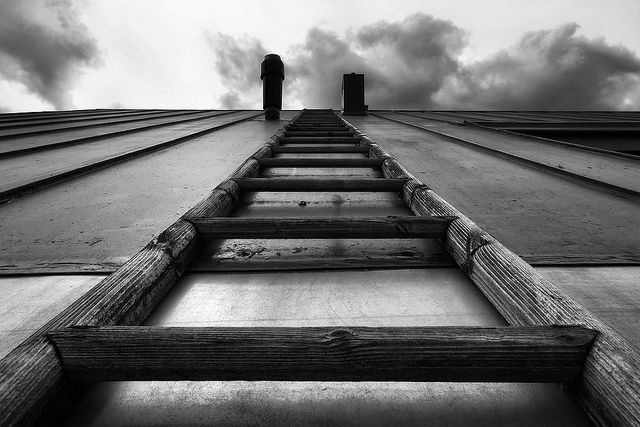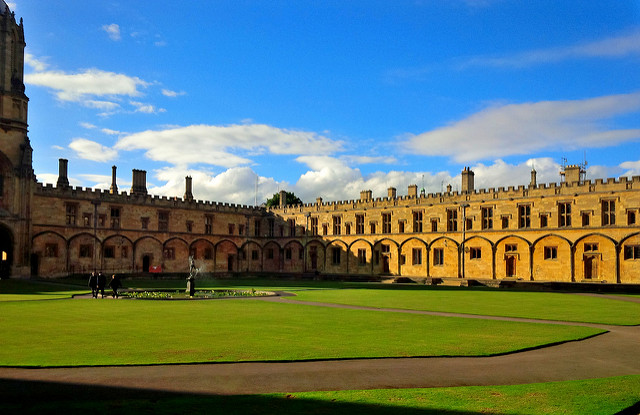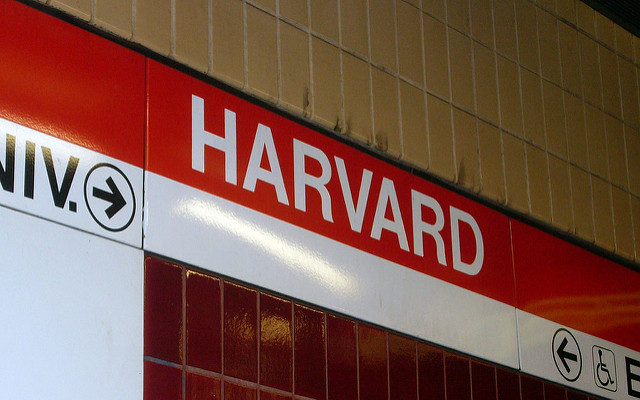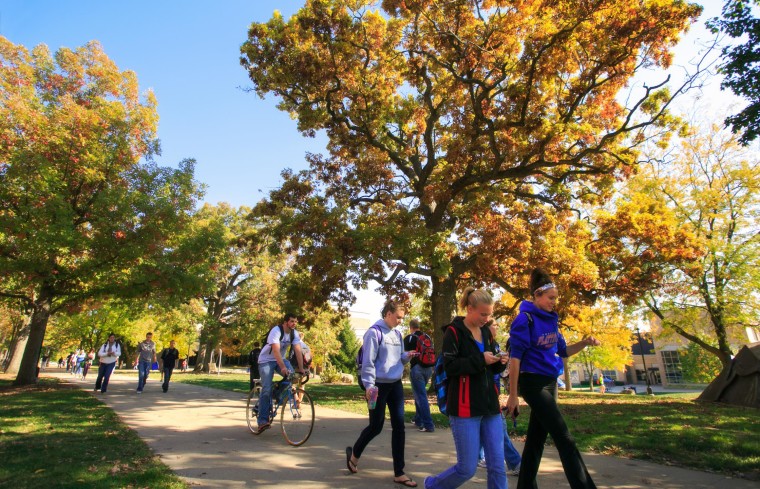Institutional diversity represents one of the great and exceptional features (Trow, 1979) of the American higher education system and serves as an influential foundation of the system’s historical success. Indeed, many scholars argue that institutional diversity embodies a “major ideological pillar” (Birnbaum, 1983, p. ix) and represents one of the most significant strengths of the U.S. higher education system (Morphew, 2009). However, a steady homogenization of higher education over the past 40 years both in the United States and around the world threatens this asset (Birnbaum, 1983; Huisman, Meek, & Wood, 2007; Meek, 1991; Morphew, 2009).

Photo credit: Huffington Post
The benefits of institutional diversity enable the American higher education system to achieve a variety of student, institutional, and societal goals.
Meeting the Needs of all Types of Students
The sheer range of educational aims that higher education attempts to address is vast. While some common indicators of student success are quite well-known (Braxton, 2000; Kuh, Kinzie, Schuh, Whitt, & Associates, 2010; Tinto, 1994), the reality that students thrive in many different settings places great strain on our system to attempt to provide for all of the desires, goals, and achieve the “best fit” for students in American higher education.
The example of community colleges highlights the challenge and inability of any single institutional type to meet the goals for all students. Community colleges offer programs for transferring to four-year institutions as well as career and technical programs.
Without even mentioning the other functions of the community college, most institutions struggle to even meet these two academic goals and in practice tend to focus on one or the other (Bahr, 2011).
The success of historically black colleges and universities highlights how an institutional type can serve one specific population well. Historically black colleges and universities (HBCUs) provide open and welcoming environments for African-American students (Allen, 1992; Kim, 2004) with examples of mentoring and increased postgraduate success (Kim & Conrad, 2006).
Similarly, female students thrive in the single-sex colleges, many of which boast a similar track record of student success as HBCUs (Riordan, 1994). These examples are just two of institutional types that demonstrate achievement with their target population.
Organizational Development
As noted in organizational theory, higher education exhibits ambiguous goals and technologies as an institutional organization. As a result, colleges and universities look to other organizations within the organizational field in an effort to evaluate the potential success of new or changing processes.
The diversity within the higher education system provides examples for institutions to benchmark and consider when making their own decisions about creating new academic programs or changing administrative structures.
The ability to conduct this environmental scanning increases the likelihood of successful decision-making and changes. For example, colleges facing financial pressure can explore the strategies used by institutions confronted by the same issues to help ascertain the best course of action.
Institutional diversity in American higher education increases the range of activities and models of teaching and research performed by colleges and universities. The diversity present within the system of higher education in the United States supports the ability of colleges and universities to serve a role in providing both elite and mass higher education (Trow, 2005).
Serving both of these, at times, competing values within a single institutional type would prove almost impossible. However with a diverse array of colleges within a single national system, both access and quality can be achieved.
Within a standardized system lacking sufficient diversity, the ability to serve multiple functions proves difficult. As Clark (1976) contends, “mass systems must be more differentiated than elite ones as they absorb a more heterogeneous clientele, respond to new demands from the labor market, and attempt to cover a wider range of knowledge” (p. 33).
The U.S. system of higher education supports the dual goals of elite and mass higher education primarily through a level of sustained institutional diversity.
Protecting Academic Freedom and Autonomy
The preservation of academic freedom and safeguards for free inquiry and discourse prove one of the most sacred values in all of American higher education. The university’s role in conducting research and creating knowledge without undue influence is a cornerstone not only of higher education, but the country generally.
To foster this, colleges and universities develop a variety of structures and processes—most notably the awarding of tenure to faculty. American society relies on higher education to pursue teaching and research for the common good essential for a free society.
In a diverse system of higher education, the pressures on institutions vary in such a way that no single trend or influence impacts all or even the majority of institutions simultaneously (Birnbaum, 1983).
Government policy makers, interests groups, and the public may pursue, intentionally or not, institutions to take action contrary to the values of academic freedom.
The strength of a diverse higher education system is that colleges and universities are impacted differentially allowing the opportunity to identify and argue against inappropriate influence.
The system’s level of diversity fosters the capacity to mitigate threats to the unobstructed pursuit of truth and free expression and ultimately protects students, faculty, institutions, and the nation.
Although less noticed, institutional diversity presents a significant benefit to higher education by providing stability to the system. As open systems, colleges and universities acquire goals and purposes in part from external stimuli (Daft & Weick, 1984).
Diversity shields the system by limiting the ability of a single external influence to drive all or even a majority of institutions toward identical and potentially unproductive actions. This helps protect key institutional and system values from damaging external trends.
The Ability to Foster Special-Interest Institutions
The establishment of minority-serving institutions (MSIs) illustrates one of the strong benefits of institutional diversity in American higher education. MSIs serve a key role in providing access and supporting the public good notion of higher education through their commitment to historically underrepresented groups in higher education (Gasman, Baez, & Turner, 2008).
As minority-serving institutions, these colleges and universities as a group enroll a high proportion of African-American, American Indian, and Hispanic students. Three types of institutions are formally designated as minority-serving institutions: historically black colleges and universities (HBCUs), tribal colleges (TCUs), and Hispanic-serving institutions (HSIs).
In light of the changing demographics of the nation, minority-serving institutions will continue to play a critical function within the higher education system by providing access to the growing minority student population.
Minority-serving colleges and universities demonstrate success in achieving engagement with students (Bridges, Kinzie, Nelson Laird, & Kuh, 2008) and improving graduation rates. Institutions that recognize the unique educational challenges of minority students are best prepared to help meet the needs of this population to facilitate postsecondary success.
Conclusion
A clearly defined mission supports both institutional aspiration as well as systemic necessities. For higher education to fulfill time-honored societal functions, colleges and universities must serve a variety of learning, research, and service goals.
Expanding our understanding of institutional diversity particularly given the challenges facing all types of colleges better prepares researchers and practitioners to support this important historical mission.
Institutional diversity dates to the beginning of American higher education, yet the contemporary context requires an understanding of the concept in light of the changing political, demographic, and economic realities of colleges and universities.






